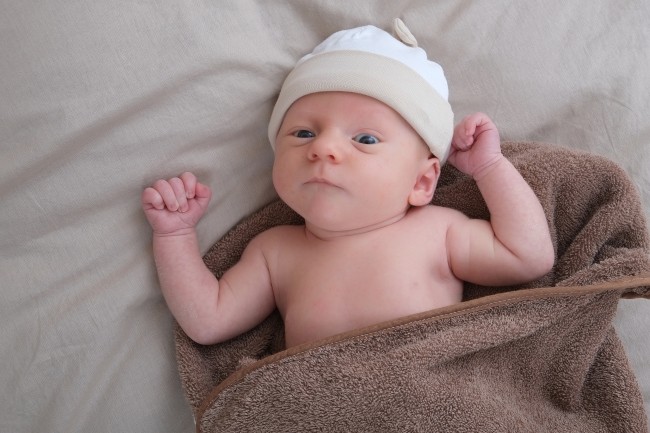An infant’s skin has many functions – it protects the body against ultraviolet radiation, provides a barrier against bacteria and toxins entering the body, and also prevents fluid and electrolyte loss from the body.
The skin enables the baby to experience the sense of touch.
The preterm infant has a more sensitive skin to that of a full term baby, as many of the skins’ layers are under-developed.
Even in a full term baby, much of the elastin fibres of the skin are formed after birth, and it may take 3 years before they are fully formed.
Birthmarks are commonly found at birth, and can be of concern to new parents. The most common birthmarks are:
Stork Bites
These appear as a pink stain over the forehead, eyelids and at the back of the head. This is due to dilatation of the tiny blood vessels under the skin (capillaries). Most will fade within the first year of life. They are usually present as a threesome (forehead, eyelids and neck).
Mongolian Spot
This looks like a deep blue-black bruise, usually occurring at the base of the spine just above the buttocks. Spots may be found on other areas of the body. They do not spread, and are likely to fade during childhood.
The most common rashes in infancy are usually found on the face and nappy area.
Contact Dermatitis
Most rashes are caused by direct damage to the skin from substances such as soaps or lotions. A red rash in the nappy area, is usually due to the presence of ammonia released by the breakdown of urine. Keep the nappy area clean and dry.
Environmental Factors
Dry winters can cause skin dryness; and extreme heat and humidity in summer can cause excessive sweating, especially in the nappy area, in ankle and knee folds, and at the back of the neck. Newborns have less pigment (melanin production), and will burn if exposed to direct sunlight, so keep babies out of the sun.
Infantile Acne
This is a common condition, and is usually found on the face, behind the ears and in the neck area. These pustules resemble acne, and may be exacerbated by heat. The intensity may vary from day to day. This acne is usually as a result of maternal hormones, and usually fades by 3 months of age.
Infections
Many skin disorders in newborns are caused by fungal or bacterial infections.
Candida or thrush, is caused by a fungal infection which causes a red nappy rash, over the genital area, and extending into the folds of the groin. Many little satellite spots are found in the area. Treatment is with an antifungal cream.
Impetigo is a bacterial infection which results in skin erosions, usually on the face, and nappy area, always covered with honey coloured crusts. Antibiotic treatment is required.
Most newborns have skin that is smooth and soft. From birth, the skin is able to fulfill most of its functions, providing that it remains intact. Damaged skin, due to whatever reason, is obviously more sensitive, so it is important that only skin products specially formulated for newborns be used to prevent complications.
Ann Richardson
Latest posts by Ann Richardson (see all)
- How to prepare your toddler for a sibling - June 9, 2014
- Your toddler and the new baby – 12 tips - June 6, 2014
- Toddler Nutrition: Healthy lunchbox ideas - June 5, 2014
-
No Comments" href="https://all4baby.co.za/newborns-0-6-months/newborn-basics/1438/baby-sense-speaker-profile-dr-claudia-gray/">

Baby Sense Speaker Profile: Dr Claudia Gray
-
No Comments" href="https://all4baby.co.za/newborns-0-6-months/month-by-month/1242/stimulating-baby-getting-balance-right/">

Stimulating your baby and getting the balance right
-
No Comments" href="https://all4baby.co.za/uncategorized/965/baby-sense-principles-happy-days-peaceful-nights/">

Baby Sense Principles for Happy Days and Peaceful Nights
-
No Comments" href="https://all4baby.co.za/babies-6-12-months/935/5-interesting-facts-baby/">

5 interesting facts about your baby


 Saving...
Saving...